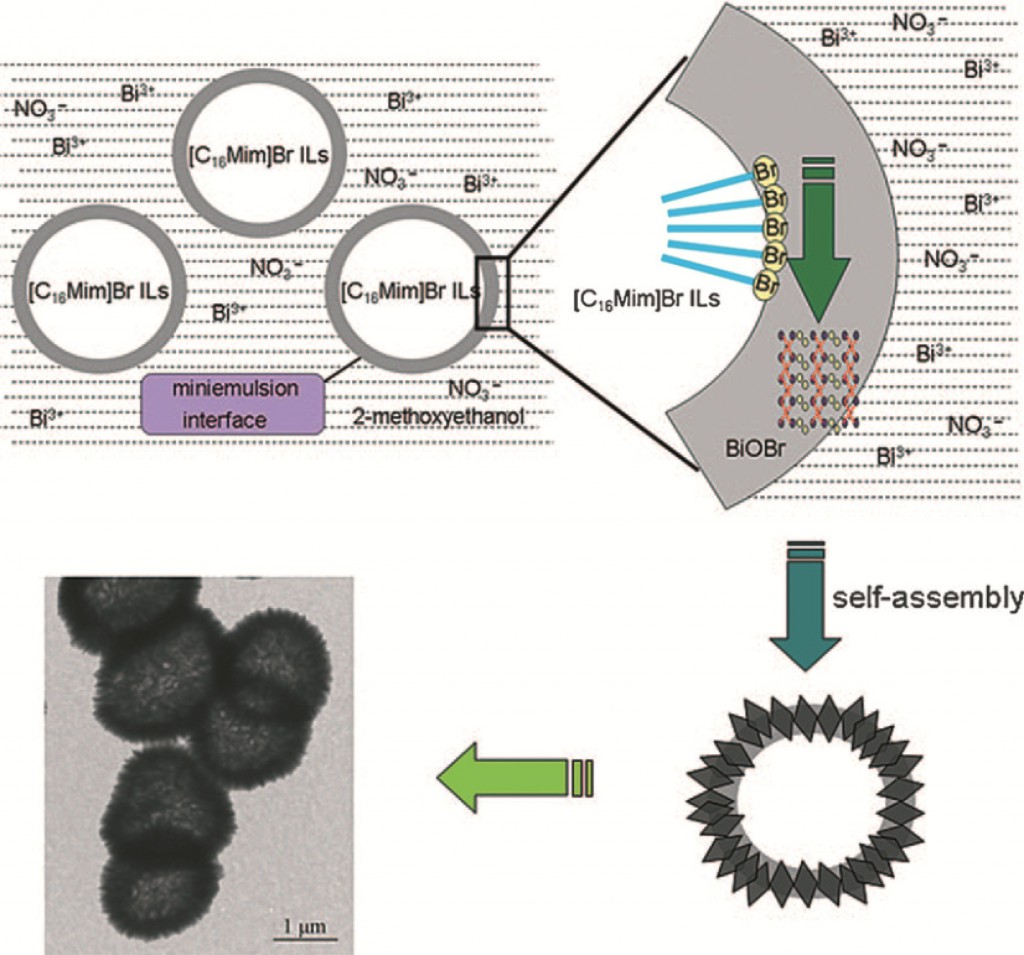The rapid growth of urbanized and industrialized areas across the globe is an ecological concern. The subject of environmental remediation is an increasingly important focus of research, with much work undertaken to discover ways of effectively treating toxic pollutants in an environmentally sound and sustainable manner. A principal development within this field has been the advent of nanomaterial-based photocatalysts for degrading organic pollutants, which provide a potentially rapid, cheap and relatively green alternative to conventional physical (e.g. adsoption, ultrafiltration) and chemical (UV radiation, H2O2 oxidation) methods of treating and removing pollutants.
BiOX (X= Cl, Br and I) materials are an emerging group of high performance semi-conducting nanomaterials for this purpose thanks to their desirable optical properties. Much research has focussed on the photocatalytic behaviour and performance of these materials under sunlight irradiation. This critical review by Liqun Ye and co-workers at Nanyang Normal University in China provides an overview of the recent developments in the research of heterogeneous chemistry and photochemistry of BiOX, relevant to their use in the photocatalytic removal of contaminants from air and water.
The review provides a concise description of key structural and optical properties that allow BiOX to act as efficient photocatalyts, outlines the different synthetic methods used for the production of these materials and describes how these different synthetic routes influence the morphology and photocatalytic activity of the different BiOX produced. The synthetic formation mechanisms are also described and depicted.
Additionally, the review describes the photocatalytic mechanisms involved in the treatment of a wide range of pollutants (including VOCs, dyes, alcohols, heavy metals, bacteria NOx and PVC). This includes discussions of photocatalytic activity, selectivity and stability, as well as providing detailed pollutant degradation pathways and description of intermediate species.
While BiOX displays excellent catalytic behaviour, modifications are still required to optimise their practical application for remediation under natural solar irradiation. These modification methods (e.g. the use of cocatalysts, doping, coupling, dye sensitization, graphene, defects, surface plasmon resonance and solid solutions) are discussed in detail. The review also includes a discussion of different BiOX facet effects and describes methods of facet confirmation within these crystalline structures.
This paper is comprehensive review of the current understanding within an innovative field of research that has the potential to improve environmental safety and protection. Furthermore, the authors provide a guideline for the most efficient production of highly active BiOX photocatalysts and outline key uncertainties and questions remaining in this field, indicating potential directions for future research in this area, in both practical and theoretical perspectives.
To access the full review download your free* copy by following the link below:
Recent Advances on BiOX (X = Cl, Br and I) Photocatalysts: Synthesis, Modification, Facet Effect and Mechanisms
Liqun Ye, Yurong Su, Xiaoli Jin and Haiquan Xie
DOI: 10.1039/C3EN00098B
*Access is free through a registered RSC account – click here to register











